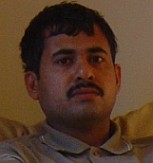Thavamai Thavamirundhu
The bulk of the story is shown through flashbacks, just like in Autograph. Mutthaiah (Raj Kiran) and his wife Sharada (Sharanya) live in a village with their two children. Mutthaiah owns a printing press, and works there. That is the only source of income for the family. They are poor, but Mutthaiah sends his boys for higher education, and he hopes that they would grow up and become engineers and doctors.
The elder son, Ramanathan (Senthil) gets a diploma from a polytechnic, and gets a job at a nearby factory; For that his father had to deposit fifty thousand rupees which he borrows from a moneylender. Ramanathan starts indulging in life, and soon his father decides that it is time to get him married and finds Latha (Meena - A new actress, not the glamour doll) for him. Latha is not very happy to stay with his parents, and after an year Ramanathan fights with his parents and shifts to a different house. Ramalingam, the younger son (played by the director Cheran himself) is more sensitive and respects his parents' emotions. He falls in love with his classmate Vasanthi (Padmapriya) in engineering college, but is unable to present and explain the whole thing to his parents, who are already upset with the elder son's deeds. Ramalingam does something to aggravate their misery further - he runs away with Vasanthi to Chennai. He struggles for a living in the city for an year.
One fine day, Ramalingam finds his father at his door. Mutthaiah had come to know about his son's story and has come to offer financial help to him. Ramalingam breaks down in front of his father, and he wants to make up for all his mistakes and to stay with his lonely parents. Soon, he manages to get a job at Chennai. Vasanthi stays under her in-law's care at the village, while Ramalingam stays at Chennai and visits the village once in a week. The rest of the story shows Ramalingam's efforts to bring happiness and peace in his parents' life.
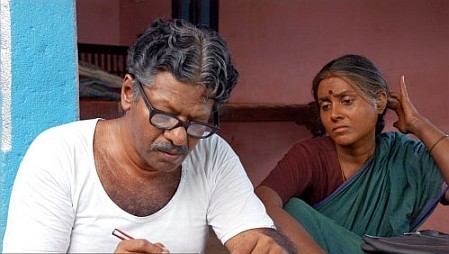
Thavamai Thavamirundhu is around 200 minutes long, and it covers the period from 1970 to 2005. The film shows a wide variety of landscapes, brilliantly photographed by MS Prabhu - It starts from a remote Tamil Nadu village covered with palm trees and vast empty lands, then goes to the city atmosphere of Chennai, and finally, to a posh apartment at Madurai, from the balcony of which we can see the tall gopurams of the Meenakshi temple standing majestically. Even though the film is shown with present-day scenes (in black and white) interwoven with flashbacks, the overall story follows the classical narration style of old tales. The story and characters are nothing really new - We have seen these characters in several Malayalam films like Kutumba Puranam, Kutumba Vishesham, Valsalyam, or even in Tamil films like Anandam. But Cheran narrates the story sensitively, with almost no melodrama, and has made it a touching viewing experience. It is a film with a message, but the message never shows up as too explicit, and it is mainly the story and characters that find prominent place in the film.
The pillars of Thavamai Thavamirundhu are Raj Kiran and Sharanya, who have given outstanding performances, capturing even the minute expressions and thought-reflections of the old couple, and made their roles memorable. Cheran himself has given a fine performance, and Padmapriya and other actors also have performed well. Even a small role like that of Latha is played nicely: The scene in which she visits her brother-in-law's apartment and scrolls her eyes through the rich surroundings with jealousy - is a perfect example. The background music by Sabesh Murali underlines the emotional intensity of the scenes.
Cheran comes out as a better director and actor in Thavamai Thavamirundhu compared to his previous film, and his sincerity and dedication is seen in every inch of the film. However, I think he should have tried to make the film shorter by editing few scenes from Ramalingam's college life and romance. Besides, Cheran and Padmapriya looked too old for the characters of college students. Towards the end of the film, Ramalingam's entry to success seemed a bit abrupt. But, Despite all of its shortcomings, Thavamai Thavamirundhu is an immensely watchable film.
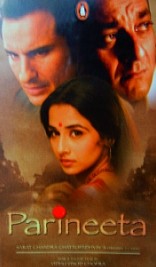 I read the short novel Parineeta today. This Bengali novel by Sharat Chandra Chattopadhyay is translated by Malobika Chaudhuri and it was published by Penguin to coincide with Pradeep Sarkar's
I read the short novel Parineeta today. This Bengali novel by Sharat Chandra Chattopadhyay is translated by Malobika Chaudhuri and it was published by Penguin to coincide with Pradeep Sarkar's 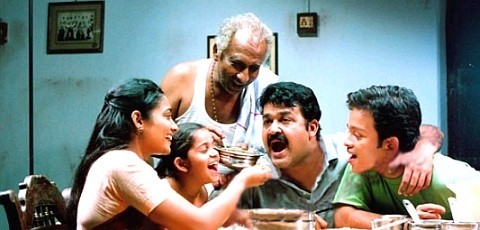
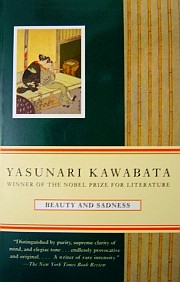 Beauty and Sadness (1975) is the last novel written by Nobel Prize-winning Japanese author Yasunari Kawabata, and it was published after his death in 1972. The novel is translated from Japanese by Howard Hibbett.
Beauty and Sadness (1975) is the last novel written by Nobel Prize-winning Japanese author Yasunari Kawabata, and it was published after his death in 1972. The novel is translated from Japanese by Howard Hibbett.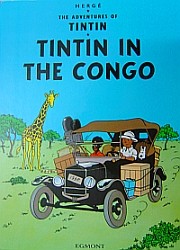 It seems Herge even redrew a page in the revised version of 1946. However, it was only in 1991 that the first English language edition of this book was published, that too in black and white. The color English version is coming now, in 2005. It completes my Tintin collection as well.
It seems Herge even redrew a page in the revised version of 1946. However, it was only in 1991 that the first English language edition of this book was published, that too in black and white. The color English version is coming now, in 2005. It completes my Tintin collection as well.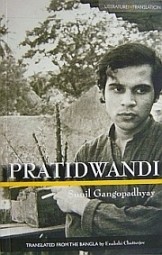 Read the Bengali novel Pratidwandi by Sunil Gangopadhyay, translated by Enakshi Chatterjee.
Read the Bengali novel Pratidwandi by Sunil Gangopadhyay, translated by Enakshi Chatterjee.